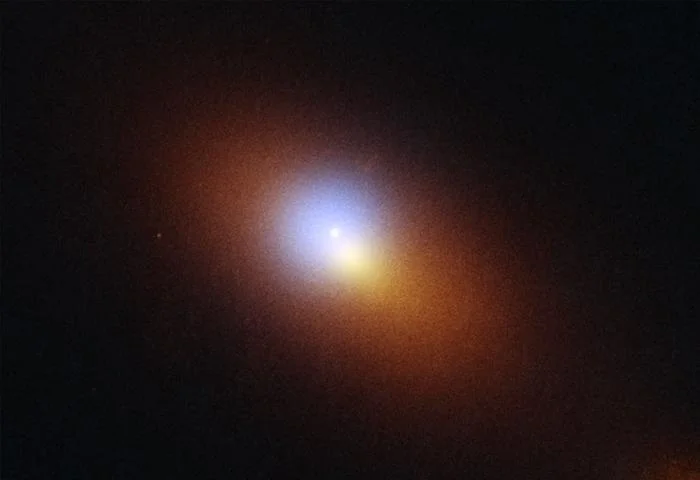
Hubble Spots Rogue Black Hole Devouring Star Far From Galaxy’s Core: A Cosmic First!
In a groundbreaking discovery, the **Hubble Space Telescope** has captured a supermassive black hole tearing apart a star far from its usual haunt, marking the first direct observation of such an event outside a galaxy's core. This rogue black hole, located approximately 2,600 light-years from the nucleus of a galaxy 600 million light-years away, challenges our understanding of these cosmic behemoths and their behavior.

The event, known as a tidal disruption event (TDE) and dubbed AT2024tvd, was initially flagged by the Zwicky Transient Facility in California. Follow-up observations from the Chandra X-ray Observatory and the Very Large Array solidified the finding. However, it was Hubble's high-resolution imaging that pinpointed the TDE's unusual location, far from the galaxy's central supermassive black hole.
"AT2024tvd is the first offset tidal disruption event (TDE) captured by optical sky surveys, and it opens up the entire possibility of uncovering this elusive population of wandering black holes with future sky surveys," explains Yuhan Yao, a postdoctoral fellow at the University of California, Berkeley, and the lead author of the upcoming publication in The Astrophysical Journal Letters. Yao added that this discovery motivates theorists to compute rates for offset TDEs, as they have primarily focused on events occurring at the centers of galaxies.
The black hole responsible boasts a mass roughly one million times that of our Sun, while the central black hole of the host galaxy weighs in at a staggering 100 million solar masses. This roaming black hole isn't gravitationally bound to its larger counterpart, suggesting a fascinating origin. It could have been part of a smaller galaxy that merged with the larger one or even ejected from the center due to past gravitational interactions.

Ryan Chornock, a UC Berkeley astronomer and study co-author, notes, "Theorists have predicted that a population of massive black holes located away from the centers of galaxies must exist, but now we can use TDEs to find them." This discovery provides crucial evidence supporting the theory of wandering black holes and validates plans for future missions like LISA (Laser Interferometer Space Antenna), designed to detect gravitational waves from merging massive black holes.
These roaming black holes offer valuable insights into galaxy evolution and the dynamics of black hole populations. The discovery of AT2024tvd opens the door for future explorations, promising to unveil more of these hidden cosmic wanderers and deepen our understanding of the universe.
Could this discovery revolutionize our understanding of how galaxies evolve? Share your thoughts and theories in the comments below!